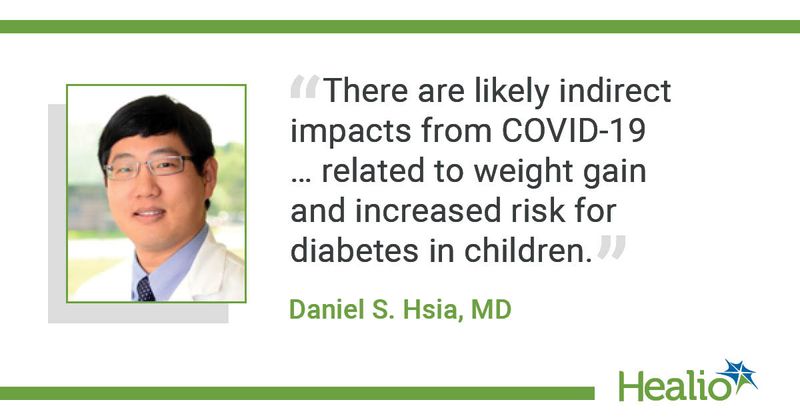More hospitalizations for new-onset type 2 diabetes in children during COVID-19
Hospitalizations for new-onset type 2 diabetes in children increased during the COVID-19 pandemic in 2020 compared with the same period in 2019, according to findings presented at the American Diabetes Association Scientific Sessions.
Data from Our Lady of the Lake Children’s Hospital in Baton Rouge, Louisiana, show more children were hospitalized with new-onset type 2 diabetes from March to December 2020 compared with 2019, even though there were slightly fewer total hospitalizations at the health center in 2020.

“These results from our one center may be a microcosm of what is happening at other children’s hospitals across the country,” Daniel S. Hsia, MD, associate professor at Pennington Biomedical Research Center, told Healio. “Providers need to be aware of children presenting with type 2 diabetes who may present with higher acuity due to the circumstances around the COVID-19 pandemic.”
Hsia and colleagues conducted a retrospective chart review of all admissions for new-onset type 2 diabetes at Our Lady of Lake Children’s Hospital from March to December 2020 as well as the same period of 2019. Children with type 1 diabetes or hyperglycemia unrelated to diabetes were not included in the analysis. Researchers also compared incidences of diabetic ketoacidosis and hyperosmolar hyperglycemic syndrome during both periods.
In 2020, Our Lady of Lake Children’s Hospital had 2,729 total hospitalizations compared with 2,964 total hospitalizations in 2019. However, there was an increase in new-onset type 2 diabetes hospitalizations from eight in 2019 to 17 in 2020. The type 2 diabetes hospitalization rate increased from 0.27% in 2019 to 0.62% in 2020 (P < .05). Of the 25 new-onset pediatric type 2 diabetes hospitalizations in 2019 and 2020, 23 were Black children and 19 were boys.
“While type 2 diabetes in the pediatric population is still considered rare compared to type 1 diabetes, the incidence rate of type 2 diabetes in children continues to rise,” Hsia said. “There are likely indirect impacts from COVID-19 that we will see in the future related to weight gain and increased risk for diabetes in children.”
The number of new-onset type 2 diabetes admissions meeting the criteria for DKA increased from three in 2019 to eight in 2020. There were also two youths who met the criteria for hyperosmolar hyperglycemic syndrome in 2020 compared with zero in 2019.
There were increases observed in mean admission HbA1c, mean admission glucose and admission serum osmolality from 2019 to 2020.
Hsia said the findings are noteworthy because the COVID-19 pandemic may have contributed to a further rise in type 2 diabetes in youths. In addition to conducting larger studies with more participants to confirm the findings, studies are also needed to examine the effect the pandemic may have had on youths.
“More research is needed to better understand how stay-at-home orders and other restrictions due to COVID-19 have worsened risk factors for type 2 diabetes like decreased physical activity, more screen time, disturbed sleep and increased intake of processed foods, which can all lead to weight gain,” Hsia said.

